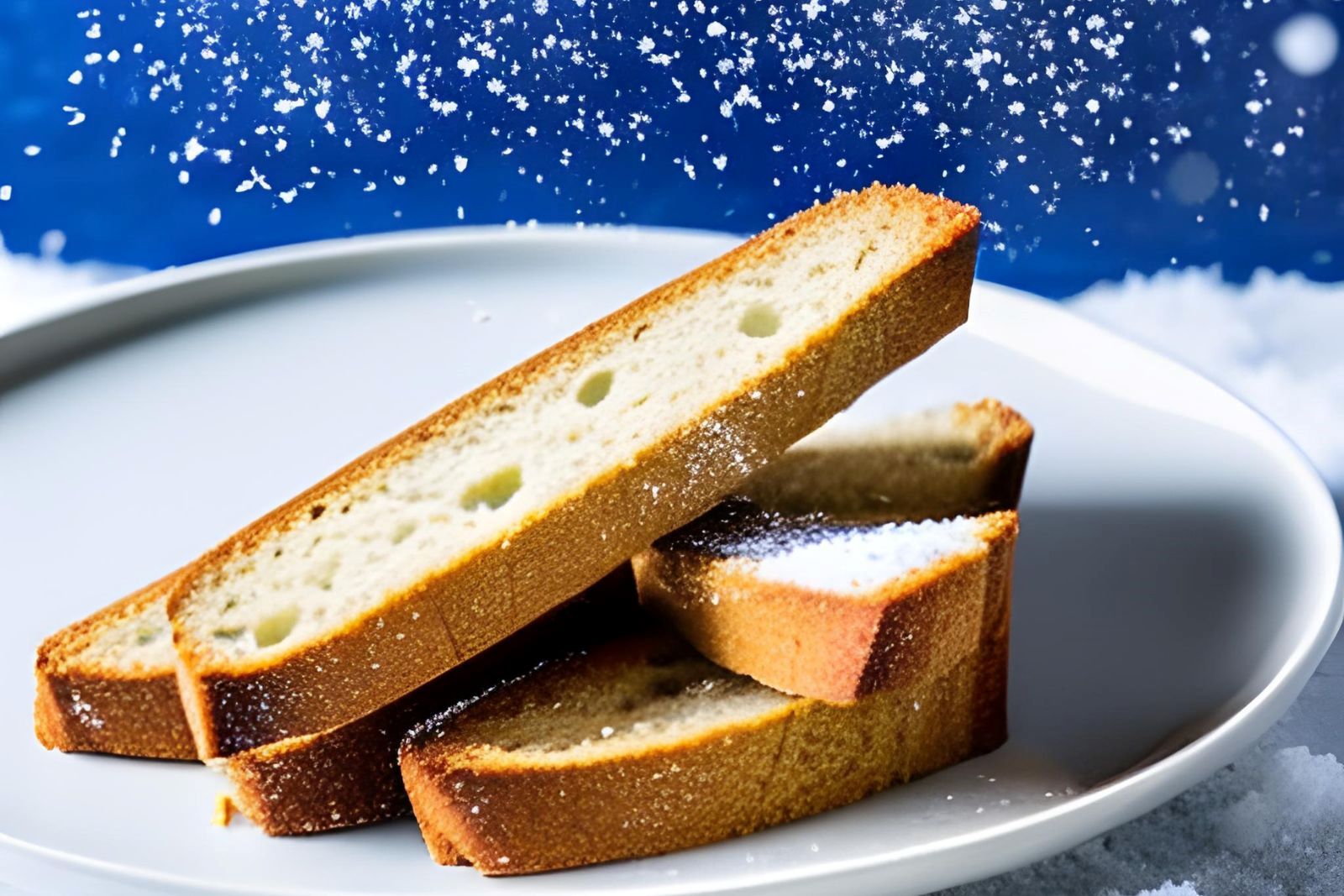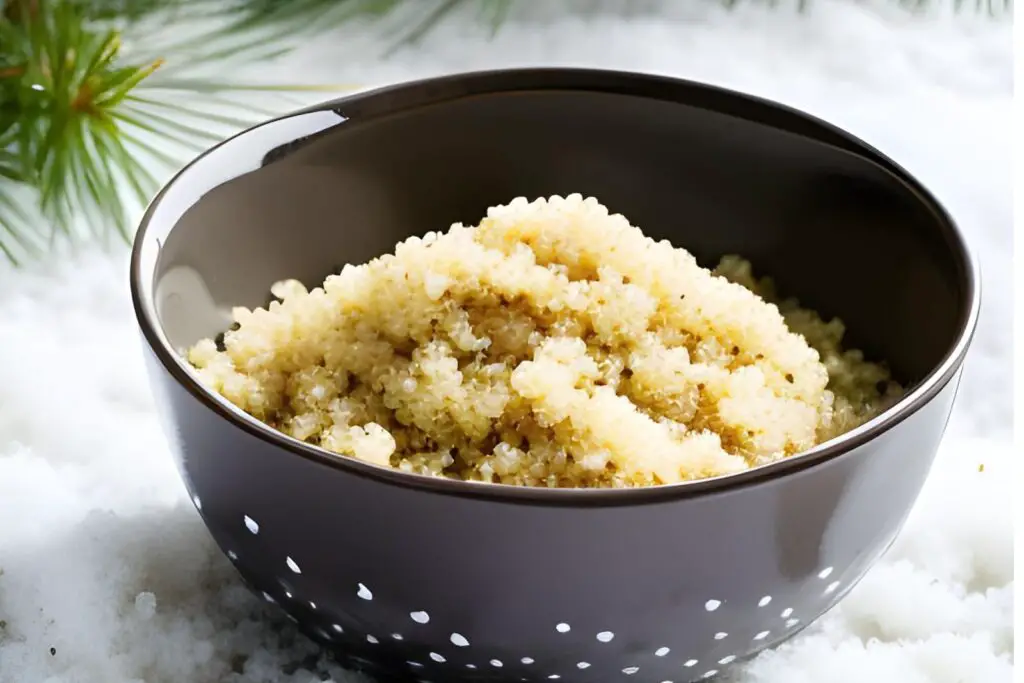
Biscotti, the beloved Italian twice-baked cookies, are renowned for their delightful crunch and irresistible flavors. Whether you’ve baked a large batch or received a generous gift, freezing biscotti can help you preserve their freshness and enjoy them at your leisure. Freezing biscotti is a simple and effective way to extend their shelf life without compromising their taste and texture. By properly storing and packaging the biscotti, you can ensure they remain crispy and flavorful for future indulgence. Whether you crave a biscotti with your morning coffee or want to savor a sweet treat after dinner, having a stash of frozen biscotti on hand allows you to relish their deliciousness whenever the craving strikes.
Here are the steps to freeze biscotti:
Step 1: Allow the biscotti to cool completely after baking.
When biscotti are removed from the oven, they are still soft and pliable. Allowing them to cool completely helps them to dry out and become crispy. This step is essential because if the biscotti are not cooled completely, they will not have the desired texture and may become soggy or chewy.
The cooling process can take anywhere from 15-30 minutes, depending on the size of the biscotti and the temperature of the surrounding environment. It is important to let them cool naturally and not to try to speed up the process by placing them in the refrigerator or freezer.
Step 2: Wrap the biscotti tightly in plastic wrap.
The next step is to wrap them tightly in plastic wrap or aluminum foil. This step is important because it helps to keep the biscotti fresh and prevents them from becoming stale or absorbing any unwanted odors or flavors.
It is recommended to wrap each biscotti individually to prevent them from sticking together. This can be done by placing each biscotti on a piece of plastic wrap or aluminum foil, wrapping it tightly, and twisting the ends to create a seal. By wrapping the biscotti individually, you can easily grab one or two without disturbing the rest of the batch.
Another option is to use a vacuum sealer to package the biscotti. This can help to remove any excess air, which can contribute to the formation of freezer burn and reduce the shelf life of the biscotti.
Step 3: Place the wrapped biscotti in an airtight container.
This will protect the biscotti from freezer burn, which can occur when moisture is allowed to evaporate from the surface of the cookies. A freezer-safe container or zip-lock bag will help to create a barrier between the biscotti and the cold, dry air of the freezer. It is important to make sure that the container or bag is airtight to prevent any air or moisture from entering and affecting the quality of the biscotti.
When placing the wrapped biscotti in the container or bag, it is important to squeeze out as much air as possible before sealing it. This will help to reduce the amount of air in the package, which can contribute to the formation of freezer burn.
It is recommended to store the biscotti in a single layer, if possible, to prevent them from breaking or becoming misshapen. If multiple layers are necessary, it is recommended to place a sheet of parchment paper or wax paper between each layer to prevent the biscotti from sticking together.
Step 4: Label the bag or container
The final step is to label the package with the date and contents. This will help you keep track of how long the biscotti have been stored and ensure that you use them before they expire.
It is important to place the labeled package in the coldest part of your freezer, which is typically at the back or bottom of the freezer. This will help to ensure that the biscotti are stored at the optimal temperature of 0°F (-18°C) or below, which will help to preserve their quality and freshness.
When it comes time to enjoy the biscotti, it is recommended to thaw them at room temperature for a few hours before serving. Avoid thawing them in the microwave or oven, as this can cause them to become too soft or lose their texture.
Other related questions
How long can you freeze biscotti?
Biscotti can be frozen for up to three months without significant loss of quality. Beyond three months, the texture and flavor of the biscotti may begin to deteriorate, and it may develop freezer burn. To ensure the best quality, it is important to store the biscotti in an airtight container or tightly wrapped in plastic wrap and to label it with the date of freezing. When thawing the biscotti, it is best to let it come to room temperature naturally to prevent moisture from causing it to become soggy.
Can I refreeze the biscotti after it has been previously thawed?
It is generally not recommended to refreeze biscotti after it has been thawed. Refreezing can cause moisture to accumulate on the biscotti, which can lead to sogginess and a loss of flavor. It is best to only thaw the amount of biscotti that will be consumed or to store it in the freezer in portioned servings. Additionally, if the biscotti has been left out at room temperature for more than two hours, it is not safe to refreeze it due to the risk of bacteria growth.
Does freezing affect the texture or flavor of biscotti?
Freezing can affect the texture and flavor of biscotti if it is not properly packaged. Moisture from the freezer can cause the biscotti to become soggy or stale, and the flavor can be altered if it is not tightly wrapped. However, if the biscotti is wrapped tightly in plastic wrap or an airtight container, it can be stored in the freezer for up to three months without significant loss of quality. When thawing the biscotti, it is best to do so at room temperature to prevent condensation and to avoid reheating it in the oven, as this can cause it to become too hard.
How long does it take for frozen biscotti to thaw at room temperature?
The time it takes for frozen biscotti to thaw at room temperature can vary depending on factors such as the size of the biscotti and the temperature of the room. Generally, it can take 1-2 hours for biscotti to thaw at room temperature. It’s important to keep the biscotti in an airtight container during the thawing process to prevent moisture from getting in and affecting the texture. If you’re in a hurry, you can also thaw the biscotti in the microwave or in a low-temperature oven.
Can I use frozen biscotti with the fresh ones?
Yes, you can use frozen biscotti with fresh ones. There should be no noticeable difference in texture or flavor if the frozen biscotti has been properly stored and thawed. However, it is important to make sure that the frozen biscotti is completely thawed and brought to room temperature before using it, as any residual moisture could cause it to become soggy. Additionally, it is best to consume the frozen biscotti within three months of freezing to ensure the best quality.
How do I know if my frozen biscotti has gone bad?
If biscotti has gone bad, it may have a stale or off flavor, and the texture may be dry, crumbly, or chewy. Additionally, if the biscotti has been stored improperly or for too long, it may develop freezer burn, which appears as white or grayish spots on the surface. While biscotti with freezer burn is still safe to eat, the texture and flavor may be significantly compromised. If in doubt, it is always best to err on the side of caution and discard any biscotti that appears to be spoiled.
Can frozen biscotti be reheated in the oven?
Yes, frozen biscotti can be reheated in the oven. To do so, preheat the oven to 350°F (175°C) and place the frozen biscotti on a baking sheet. Bake for 5-7 minutes or until the biscotti is heated through and crisp. Be sure to watch the biscotti closely during reheating to avoid over-browning or burning. It is important to note that reheating biscotti may not completely restore its texture to its original state, so it is best to freeze only the amount of biscotti that will be consumed to ensure the best quality.
Can you freeze the biscotti dough before baking?
Yes, biscotti dough can be frozen before baking. To freeze biscotti dough, shape the dough into a log and wrap it tightly in plastic wrap or place it in an airtight container. Label the container or wrap it with the date of freezing and freeze for up to 3 months. When ready to bake, remove the dough from the freezer and let it thaw in the refrigerator overnight or at room temperature for a few hours. Once the dough is thawed, slice it to the desired thickness, bake it as usual, and enjoy freshly baked biscotti anytime.
Can you freeze biscotti with different flavors in the same container?
It is possible to freeze biscotti with different flavors in the same container, but it is not recommended. Flavors can blend together during storage, resulting in an undesirable taste. It is best to separate biscotti flavors into different airtight containers or to wrap them individually in plastic wrap before freezing. This way, the flavors can be easily distinguished, and the integrity of each flavor can be preserved.
Can you freeze biscotti with nuts or other mix-ins?
Yes, biscotti with nuts or other mix-ins can be frozen, but it is important to take some precautions to preserve their texture and flavor. To prevent the nuts or mix-ins from becoming stale or rancid, it is best to store the biscotti in an airtight container or wrap them tightly in plastic wrap before freezing. Additionally, it is recommended to freeze the biscotti as soon as possible after baking to retain freshness. When thawing, it is best to allow the biscotti to come to room temperature naturally to avoid any condensation that could make them soggy.








